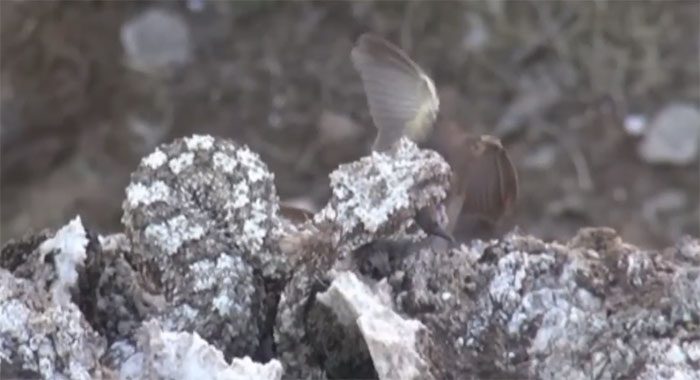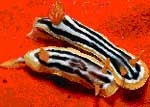The spider-tailed viper effectively hunts prey using clever camouflage and a tail tip that resembles a spider to lure in birds.
The spider-tailed viper waving its tail to attract birds. (Video: SciNews).
The spider-tailed viper (Pseudocerastes urarachnoides), primarily found in Iran and Iraq, lures its prey solely by waving its tail, with no other body parts moving. With just a few tail shakes, it can make its tail tip look like a spider crawling. This “spider” appears very realistic, even to someone who has been warned, Science Alert reported on January 8.
In reality, the “spider” at the tail tip of the viper is a mass of tissue with long appendages on either side. When inactive, it seems harmless. However, it can spring to life in an instant. The spider mimicry effect is further enhanced by the viper’s camouflage ability: the rest of its body blends perfectly with the rocky, earthen environment.
With its exceptional camouflage, the spider-tailed viper is nearly invisible to birds foraging for food. They mistake the viper’s tail for a real spider and dive to grab it, unaware they are falling into a trap and about to become a delicious meal for the viper.

The spider-tailed viper spends an average of about one-third of its time waving its tail at key ambush locations.
The spider-tailed viper has one of the most complex tail decorations recorded among snake species. However, this mysterious creature had “eluded” scientists’ observation for decades. The Field Museum of Natural History in Chicago has preserved a single specimen for 35 years.
The tail of the specimen was very unusual, but scientists at the time could not confirm whether it was a new snake species or just a deformity. The strange tail tip could also have been a tumor or the result of a parasitic infection.
It wasn’t until 2003 that experts discovered another snake of the same type and confirmed it as a completely new species. However, they still knew very little about its behavior in the wild. Bird remains were found in the stomachs of some specimens, but it was unclear how the snake captured such high-flying prey.
After years of observing the spider-tailed viper in its natural habitat, Iranian scientists published their research findings in 2015. The team discovered that the spider-tailed viper spends an average of about one-third of its time waving its tail at critical ambush spots. When a bird enters its line of sight, the intensity of the tail waving increases by about four times.
Other snake species also employ similar tail tactics when hunting, but the way the spider-tailed viper mimics a spider is particularly sophisticated. According to preliminary data, their strategy is most effective when applied to migratory bird species, which are not accustomed to the risks of catching spiders in mountainous areas.





















































